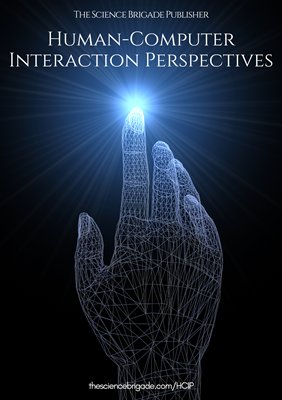AI Assisted Drug Discovery: Emphasizing Its Role in Accelerating Precision Medicine Initiatives and Improving Treatment Outcomes
Keywords:
AI, drug discovery, precision medicine, machine learning, deep learning, molecular design, target identification, virtual screening, personalized therapy, healthcareAbstract
Artificial Intelligence (AI) has emerged as a transformative tool in the field of drug discovery, revolutionizing the way researchers identify and develop new therapeutic compounds. This paper explores the application of AI in drug discovery processes, emphasizing its role in accelerating precision medicine initiatives and improving treatment outcomes. By leveraging AI algorithms, researchers can analyze vast amounts of biological data, predict drug-target interactions, and design novel molecules with enhanced specificity and efficacy. AI-driven approaches such as machine learning, deep learning, and natural language processing have enabled the discovery of new drug candidates in a fraction of the time and cost compared to traditional methods. This paper highlights key AI techniques and applications in drug discovery, discusses challenges and limitations, and examines future prospects for AI-driven precision medicine.
Downloads
References
Angermueller C, Pärnamaa T, Parts L, Stegle O. Deep learning for computational biology. Mol Syst Biol. 2016 Aug 1;12(7):878. doi: 10.15252/msb.20156651.
Gawehn E, Hiss JA, Schneider G. Deep learning in drug discovery. Mol Inform. 2016 Dec;35(1):3-14. doi: 10.1002/minf.201501008.
Jain S, Goyal AK, Gupta PN. Progress in artificial intelligence (AI)-enabled drug discovery. Artif Intell Med. 2021 May;116:102049. doi: 10.1016/j.artmed.2020.102049.
Jiménez-Luna J, Ribeiro AJM, Nascimento ADS, Costa FMD, Vesely C, Domingues I, Gallardo-Alvarado J, Pires das Neves R, Giráldez T, Godinho Ferreira M, Vercauteren DP. Artificial intelligence in drug discovery: Recent advances and future perspectives. Expert Opin Drug Discov. 2018 Jun;13(6):505-514. doi: 10.1080/17460441.2018.1473783.
Kadurin A, Aliper A, Kazennov A, Mamoshina P, Vanhaelen Q, Khrabrov K, Zhavoronkov A. The cornucopia of meaningful leads: Applying deep adversarial autoencoders for new molecule development in oncology. Oncotarget. 2017 Jun 20;8(7):10883-10890. doi: 10.18632/oncotarget.14073.
Kim S, Thiessen PA, Bolton EE, Chen J, Fu G, Gindulyte A, Han L, He J, He S, Shoemaker BA, Wang J. PubChem substance and compound databases. Nucleic Acids Res. 2016 Jan 4;44(D1):D1202-D1213. doi: 10.1093/nar/gkv951.
Schneider G. Automating drug discovery. Nat Rev Drug Discov. 2018 May;17(2):97-113. doi: 10.1038/nrd.2017.232.
Stokes JM, Yang K, Swanson K, Jin W, Cubillos-Ruiz A, Donghia NM, MacNair CR, French S, Carfrae LA, Bloom-Ackerman Z, Tran VM. A deep learning approach to antibiotic discovery. Cell. 2020 Jun 25;180(4):688-702. doi: 10.1016/j.cell.2020.01.021.
Wei W, Liu H, Li J, Mei J, Chen M, Luo C, Liang Y, Zhao G, Lu J. Deep learning in drug discovery: opportunities, challenges and future prospects. Drug Discov Today. 2020 Sep;25(9):1710-1723. doi: 10.1016/j.drudis.2020.05.003.
Xue W, Zeng J, Zhang W, Liu H, Liu H, Zhu F, Yang X, Xu C, Li J, Chen YZ, Luo H. Deep learning-based drug discovery for GPCR-targeted agents. Brief Bioinform. 2021 Jan 20;22(1):324-337. doi: 10.1093/bib/bbaa235.
Downloads
Published
Issue
Section
License

This work is licensed under a Creative Commons Attribution-NonCommercial-ShareAlike 4.0 International License.
License Terms
Ownership and Licensing:
Authors of this research paper submitted to the journal owned and operated by The Science Brigade Group retain the copyright of their work while granting the journal certain rights. Authors maintain ownership of the copyright and have granted the journal a right of first publication. Simultaneously, authors agreed to license their research papers under the Creative Commons Attribution-NonCommercial-ShareAlike 4.0 International (CC BY-NC-SA 4.0) License.
License Permissions:
Under the CC BY-NC-SA 4.0 License, others are permitted to share and adapt the work, as long as proper attribution is given to the authors and acknowledgement is made of the initial publication in the Journal. This license allows for the broad dissemination and utilization of research papers.
Additional Distribution Arrangements:
Authors are free to enter into separate contractual arrangements for the non-exclusive distribution of the journal's published version of the work. This may include posting the work to institutional repositories, publishing it in journals or books, or other forms of dissemination. In such cases, authors are requested to acknowledge the initial publication of the work in this Journal.
Online Posting:
Authors are encouraged to share their work online, including in institutional repositories, disciplinary repositories, or on their personal websites. This permission applies both prior to and during the submission process to the Journal. Online sharing enhances the visibility and accessibility of the research papers.
Responsibility and Liability:
Authors are responsible for ensuring that their research papers do not infringe upon the copyright, privacy, or other rights of any third party. The Science Brigade Publishers disclaim any liability or responsibility for any copyright infringement or violation of third-party rights in the research papers.



